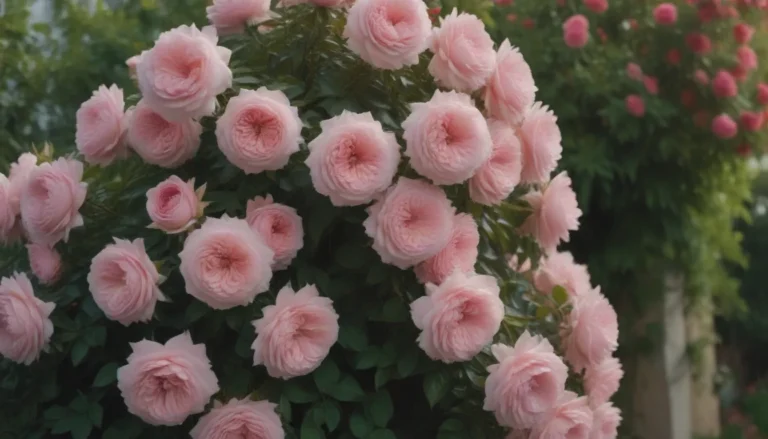The Ultimate Guide on How to Successfully Grow and Care for Dendrobium Orchids

Welcome to the ultimate guide on growing and caring for Dendrobium orchids, a beautiful and diverse group of plants that can be a stunning addition to any home. With nearly 2,000 species in the Dendrobium genus, these orchids offer a wide range of appearances and bloom colors, making them a popular choice among orchid enthusiasts. Native to southeast Asia, these plants can thrive in various climates, from hot, wet lowlands to cool, high-altitude mountains.
Understanding Dendrobium Orchids
Dendrobium orchids are primarily epiphytes, meaning they grow on other plants without taking nutrients from the host. In nature, they are often found clinging to tree branches. These orchids are known for their profuse blooms that come in a variety of pastel tones, with some species blooming along the lengths of their stems while others bloom only at the tops. Some Dendrobium orchids are deciduous and drop their leaves in the fall, while others retain their foliage year-round. With proper care, these orchids can live for decades, bringing joy with their beautiful and delicate flowers.
How to Care for Dendrobium Orchids
Light
Select a bright window, preferably south-facing, to provide your orchid with the light it needs to bloom beautifully. Be mindful of too little light if you notice tiny offshoot plants (keikis) on young canes or yellow leaves, which can indicate too much direct sunlight.
Soil
When potting or repotting your Dendrobium orchid, use a special orchid growing mixture that mimics its natural environment. Ensure the medium is well-draining and aerated to prevent root rot from excess moisture.
Water
Watering is crucial during the growing season, using distilled water or rainwater to prevent mineral buildup. Simply check the moisture level by sticking your finger in the medium—if it feels wet, wait until it dries slightly before watering. Avoid overwatering to prevent root rot and leaf yellowing.
Temperature and Humidity
Maintain daytime temperatures between 70°F and 85°F with a nighttime drop of about 10°F for optimal growth. Many Dendrobium orchids require a winter rest period at around 55°F to stimulate reblooming. Keep humidity levels between 50 and 70 percent to prevent dry air from affecting the plant.
Fertilizer
During the growing season, feed your orchid with a balanced orchid fertilizer following label instructions. Reduce fertilization by half at the end of the growing season to allow the plant to rest.
Types of Dendrobium Orchids
Dendrobium orchids are classified into six distinct groups with unique characteristics and care requirements. Understanding which group your orchid belongs to is crucial in providing the best care possible:
- Dendrobium phalaenopsis
- Dendrobium spatulata
- Dendrobium Callista
- Dendrobium Latouria
- Dendrobium Formosae
- Dendrobium Stefano
Pruning and Propagating Dendrobium Orchids
Pruning your orchid involves removing faded flowers while retaining old canes for nutrient storage. Propagating Dendrobium orchids is possible by dividing the plant if it has at least four canes with healthy leaves.
How to Grow Dendrobium Orchids From Seed
While seed propagation of orchids is challenging and best left to professionals due to complex germination processes, dividing plants is a more accessible method for home growers.
Potting and Repotting
Use a well-draining container with orchid potting mix for your Dendrobium orchid, repotting every two to three years in the spring. Choose a pot large enough to accommodate new growth and ensure the roots are spread out when repotting.
Overwintering
Provide your orchid with a cooler, drier rest period during the winter to promote healthy growth. Adjust temperatures and watering schedules according to the species of Dendrobium orchid you are caring for.
Common Pests & Plant Diseases
Mealybugs are a common pest for Dendrobium orchids, requiring treatment with a homemade solution or commercial pesticide. Monitor for signs of disease, such as petal blight, and ensure proper watering practices to prevent root rot.
How to Get Dendrobium Orchids to Bloom
Most Dendrobium orchids bloom profusely in the spring and summer, with some species producing multiple blooms per year. Enhance blooming by providing adequate light, temperature, and regular feeding during the active growing season.
Reblooming
Encourage reblooming by providing a winter rest period with lower temperatures and reduced watering. Some species may not require a long rest period, so be mindful of individual care needs.
Common Problems and Solutions
While Dendrobium orchids are generally easy to grow, you may encounter issues such as yellowing leaves, spotted foliage, or burnt leaf edges. Address these problems by adjusting watering, fertilization, and light exposure to create an optimal growing environment for your orchid.
In conclusion, Dendrobium orchids are a delightful addition to any home, offering beautiful blooms and unique growth habits. By understanding the specific care requirements of your orchid and providing optimal conditions, you can enjoy these stunning plants for years to come. Remember to monitor your orchid regularly, adjust care practices as needed, and enjoy the beauty of your thriving Dendrobium orchid. Happy growing!





